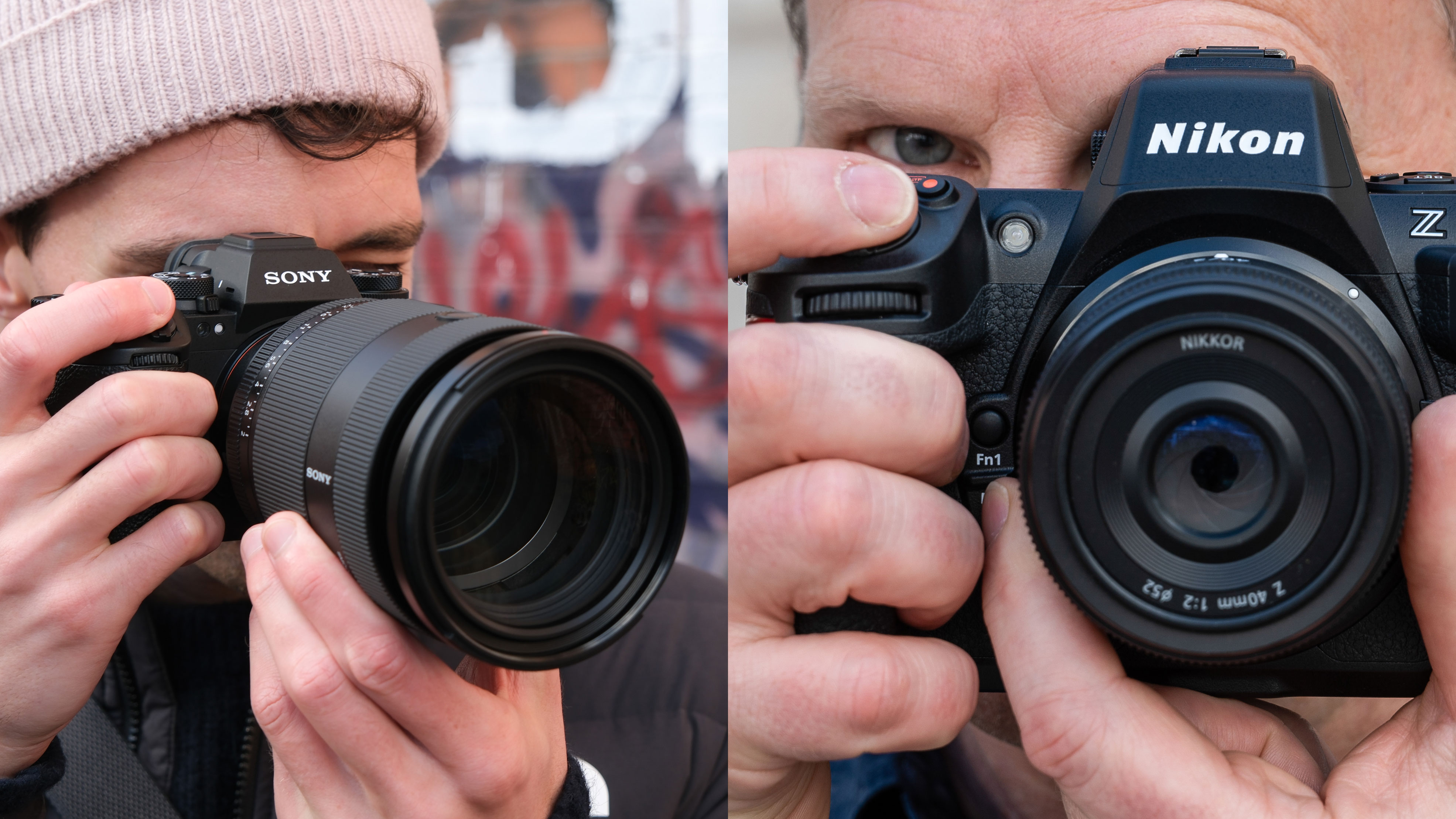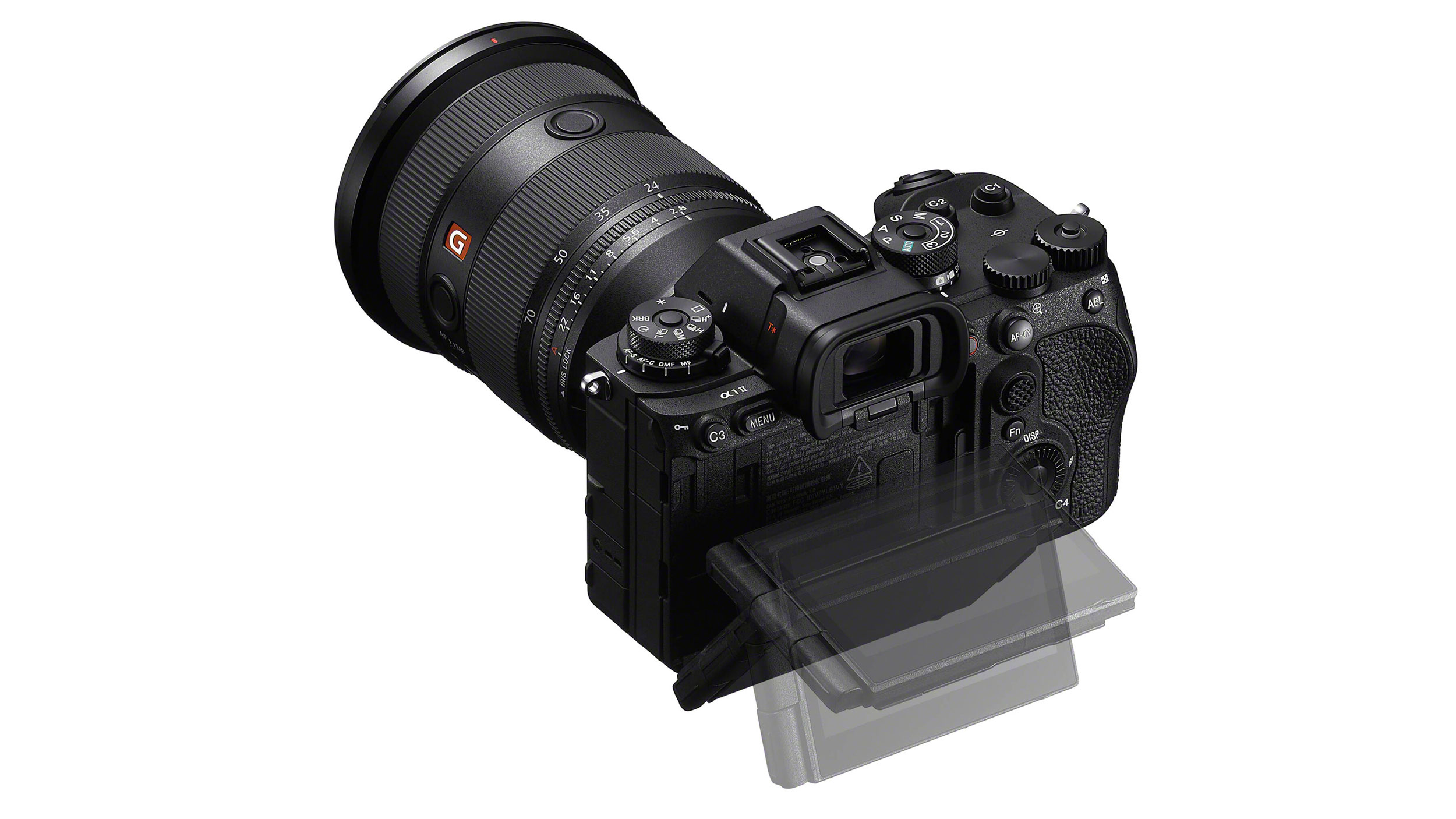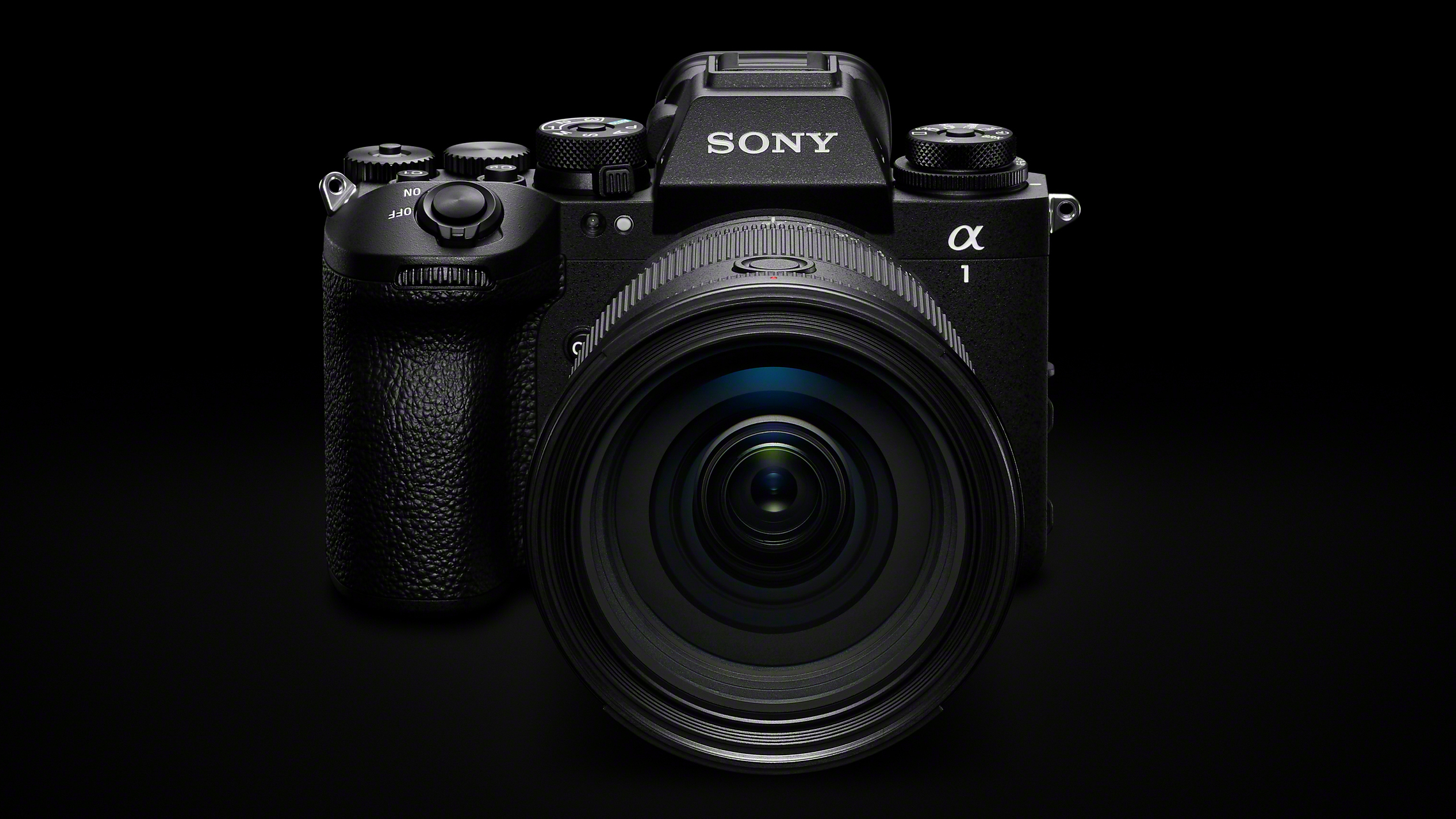Sony A1 II vs Nikon Z8: a close battle on specs – but not on price
The new Sony A1 II is a monster of a camera, but is it convincingly better than the mighty Nikon Z8? Let’s find out

When the Sony A1 was launched in January 2021, no other camera could match its combination of 30fps shooting, 50MP resolution and 8K video. How things change! The Sony A1 II has arrived with a whole series of technical improvements, but rival makers have been even busier.
The Nikon Z9 has been especially impressive, although it took a few firmware updates to release its full potential. And now we have the Nikon Z8, a camera with much of the power of the Z9 but in a much smaller form factor closer in size and weight to the mighty Sony A1 II.
The Nikon Z8 all but matches the A1 II for resolution, beats it for 8K video and appears to win by a mile for continuous shooting burst rates – and all for around half the price. The Z8 is clearly one of the best Nikon cameras you can buy, just as the Sony A1 II is one of the best Sony cameras. But which of these is the best camera for professionals?
There are lots of details in the specifications that can prove just as important as the headline specifications, so is the Nikon Z8 really a close rival to the Sony A1 II, or is the Sony actually a far better all-round camera that justifies its huge price premium?
Let’s compare these cameras in a lot more detail to find out…
Sony A1 II vs Nikon Z8
Why you can trust Digital Camera World
Sensor
• Sony A1 II: 50.1MP full frame Exmor RS with Sony BIONZ XR processor, pixel-shift mode up to 800MP from 16 frames
• Nikon Z8: 45.7MP full frame stacked CMOS, 180MP high-res pixel shift mode
The Sony A1 II does not have the highest resolution in a full frame mirrorless camera, but it is the second-highest behind the Sony A7R V, Leica SL3, Leica M11 and Sigma fp L. The fact is, though, that 50MP is likely to be enough for almost any application and, if not, Sony’s pixel-shift high resolution mode can combine up to 16 frames for a massive 800MP image.
It is only 5MP ahead of the Nikon Z8, however, a camera at not much more than half the price. 5MP is not likely to make much difference at all, so in terms of resolution these two cameras are closely matched. If you are interested in high-res pixel-shift shooting, though, the Z8 only goes up to 180MP.
ISO range
• Sony A1 II: ISO 100-32,000, exp 50-102,400
• Nikon Z8: ISO 64-25,600, exp 32-102,400
Interestingly, the Nikon Z8 has a slightly lower standard ISO maximum, though both cameras go right up to ISO 102,400 in expanded mode. Landscape shooters might be swayed by the Z8’s lower minimum ISO, however, which will enable slightly longer exposures in outdoor shots. Sony does claim up to 15 stops of dynamic range at lower ISOs.
Autofocus
• Sony A1 II: Hybrid AF, 759 phase detect AF points. AI processing unit, auto AI subject recognition, human pose estimation
• Nikon Z8: Hybrid AF, 493 AF points. Deep learning AF, Subject detection and AF work down to -9EV in Starlight mode
There’s no doubt that Nikon has made huge strides in AI autofocus and subject tracking, but our own tests suggest it’s not quite at the same level as the Sony A1 II. This camera now offers automatic subject recognition (at last, Sony!) and improved Real-time Recognition AF, Real-time Tracking and human eye recognition. Sony is an acknowledged leader in AF and tracking and the Z8 in comparison does not quite show the same ‘stickiness’ when following moving subjects. The ability to focus in light levels as low as -9EV, however, is pretty amazing.
Continuous shooting
• Sony A1 II: 30fps, 120 AF/AE calculations per second, pre-capture mode, max 400 JPEGS, 200 RAW+JPEG, 100 lossless compressed RAW
• Nikon Z8: 60fps or 30fps full resolution JPEG, 120fps 11MP JPEG, 1000+ HE raw files at 20fps
On paper, the Nikon Z8 looks the better camera for fast action, with a higher maximum frame rate of an amazing 120fps and a maximum buffer capacity of 1000+ HE (High Efficiency) raw files. All is not as it seems, however, because in order to achieve those higher burst speeds with the Z8, you have to accept some compromises. Its 30fps mode is JPEG only, its 60fps mode brings an APS-C crop and at 120fps it only captures 11MP images.
In fact, the Z8’s maximum speed for raw files is 20fps, where the A1 II can shoot raw at 30fps. For that reason, it’s a complicated comparison. The Z8 is technically faster but for those who want to shoot raw it’s the Sony A1 II that has the advantage.
Video
• Sony A1 II: 8K 30p 4:2:2 10-bit, Super 35 oversampled from 5.8K, 4K up to 120p
• Nikon Z8: 8.3K 60p 12-bit raw internal, 4K up to 120p
The Sony A1 was one of the first mirrorless cameras to be able to shoot 8K video, but rival camera makers have moved on and while the Sony A1 II has many improvements, its 8K video is still capped at 30fps. The Nikon Z8, on the other hand, offers 8.3K 60p capture using Nikon’s 12-bit N-RAW format. If you prefer to shoot in 4K then these two cameras are evenly matched, with frame rates up to 120fps. Here, the Sony’s superior AF tracking is likely to be the deciding factor, along with its sophisticated stabilization options (next section).
Stabilization
• Sony A1 II: 5-axis IBIS, 8.5 stops at the center, 7.0 stops at periphery
• Nikon Z8: 5-axis, 5.5 stops
Sony claims 8.5 stops of shake compensation for the A1 II, while the Nikon Z8 looks some way behind at 5.5 stops. The actual, reliable stabilization you get with digital cameras does not always align with the quoted figures, but the Sony does nevertheless appear to have an advantage here.
This advantage potentially extends when you take into account the A1 II’s Active Stabilization mode and its Dynamic Active mode, which applies digital stabilization too.
Viewfinder
• Sony A1 II: 0.64 type, 9.44m-dot, 0.9x magnification. Blackout-free viewing
• Nikon Z8: 0.5 type, 3.69m-dot, 0.8x magnification. Blackout free Real Live viewfinder
The Nikon Z8 has a modest but effective 3.69m-dot EVF, with a resolution that’s perhaps a little lower than many might expect from a flagship camera. The Sony A1 II has no such problem, boasting a larger 0.64 type EFV panel with a huge 9.44m-dot resolution. Both cameras offer blackout-free viewing, but the Sony’s has a slightly higher 0.9x magnification compared to 0.8x for the Nikon Z8. It’s a pretty clear win for the Sony’s EVF.
Rear screen
• Sony A1 II: 4-axis multi-angle, 3.2-in, 2.1m dots
• Nikon Z8: 4-axis vertical/horizontal, 3.2-inch, 2.1m dots
Sony has introduced a very clever 4-axis tilt mechanism on the A7 II which combines a conventional on-axis tilt with a flip-out vari-angle pivot. The Nikon Z8 does not offer a vari-angle screen but instead provides a combined vertical/horizontal tilting hinge which, for photographers, may prove just as useful. In terms of design, the Sony A1 II does seem to have the edge.
Otherwise, the display specifications are identical. Both cameras feature a 3.2-inch display usefully larger than the regular 3-inch size, and both have a resolution of 2.1 million dots.
Storage
• Sony A1 II: 2x SD/CFexpress Type A
• Nikon Z8: 1x CFexpress Type B, 1x SD UHS-II
Purists will probably prefer the Sony A1 II’s storage setup, which consists of two dual-format CFexpress Type A/SD UHS II card slots. The SD compatibility means anyone with a stock of SD cards can still use them, while the CFexpress Type A support offers faster write speeds, unlocking more of the Sony’s potential. The one downside is that CFexpress Type A cards are both slower and more expensive than the more widely used CFexpress Type B format – which is what the Nikon Z8 uses.
The Z8’s storage system is configured differently. Like the Sony, it has twin card slots, but one is for SD UHS II cards and the other is for CFexpress Type B. This offers the same dual-format flexibility as the A1 II, and access to faster, cheaper CFexpress Type B cards, but you no longer have the ability to use ‘paired’ cards of the same speed and format in both slots.
Battery
• Sony A1 II: NP-FZ100, 420 shots (EVF), 520 shots (rear screen)
• Nikon Z8: EN‑EL15c, 340 shots
Sony uses its effective and widely-used NP-FZ100 battery in the A1 II, and its performance here is pretty good – note that you will get a somewhat longer battery life if you use the rear screen rather than the EVF.
The Nikon Z8 is slightly disappointing here. It uses an EN-EL15c variant of its long-running EN-EL15 cell, which did a great job in its DSLRs but offers just 340 shots on a charge in the Nikon Z8. If you intend to go out for an intense full-day’s shooting with either camera you should take spares, but all the more so with the Nikon Z8.
Size and weight
• Sony A1 II: 136.1 x 96.9 x 82.9mm, 743g
• Nikon Z8: 144 x 118.5 x 83mm, 910g
Given the enormous power of the Sony A1 II, it’s a surprisingly compact camera. In fact it’s noticeably smaller than the Nikon Z8 in width and height, and it’s also a good deal lighter – though by the time you attach a constant-aperture pro lens, these cameras are going to feel pretty similar.
Price
• Sony A1 II: $6,498 / £6,299
• Nikon Z8: $3,497 / £3,149
The price point is by far the biggest difference between these two cameras. At the time of writing this, the Nikon Z8 is very literally around half the price of the Sony A1 II. The pricing may have some historical context, since the original Sony A1 cost around $6,500 / £6,500 and Sony was hardly likely to step down from that with its new and improved replacement. The Nikon Z8, meanwhile, is in some ways living in the shadow of the Z9 so it was always going to have a lower price point.
It does seem as if Sony has painted itself into a corner with the Sony A1 II’s pricing. When the original camera came out there was nothing like it, but now there is, and it’s a lot cheaper.
Sony A1 II vs Nikon Z8: summary
There are areas where you can say the Sony A1 II is definitely superior to the Nikon Z8 and some areas where the balance shifts more towards the Nikon. The Sony has a small edge for outright resolution, though hardly enough to make a significant practical difference. Sony’s legendary AF technologies are improved again for this model, and it’s still more effective than the Z8 in this respect.
But the awesome 8K video of the original A1 does not seem to have moved on much at all, and it’s now trumped by the 8K 60p raw capture of the Nikon Z8. Worse (for Sony), the Z8 can boast much higher burst speeds than the Sony A1 II, though admittedly this is only by switching to JPEG capture and ultimately lower resolutions – so this is not such a clear-cut ‘victory’ after all.
The biggest factor in this comparison, however, is surely the price. The Sony A1 II remains the most expensive mainstream full-frame mirrorless camera of all, and the huge differential in price between this camera and the Nikon Z8 is hard to explain. When you take everything into account you could argue that the Sony’s advanced AF, sophisticated stabilization and 30fps raw shooting make it overall the better camera – perhaps – but it’s not a clear win, and the price differential is huge.
The best camera deals, reviews, product advice, and unmissable photography news, direct to your inbox!

Rod is an independent photography journalist and editor, and a long-standing Digital Camera World contributor, having previously worked as DCW's Group Reviews editor. Before that he has been technique editor on N-Photo, Head of Testing for the photography division and Camera Channel editor on TechRadar, as well as contributing to many other publications. He has been writing about photography technique, photo editing and digital cameras since they first appeared, and before that began his career writing about film photography. He has used and reviewed practically every interchangeable lens camera launched in the past 20 years, from entry-level DSLRs to medium format cameras, together with lenses, tripods, gimbals, light meters, camera bags and more. Rod has his own camera gear blog at fotovolo.com but also writes about photo-editing applications and techniques at lifeafterphotoshop.com










